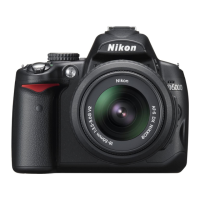CHAPTER 1: THE D5000 TOP TEN LIST 7
3. SET YOUR JPEG IMAGE QUALITY
Your new D5000 has a number of image quality settings to choose from, and depend-
ing on your needs, you can adjust them accordingly. Most people shoot with the JPEG
option because it allows them to capture a large number of photos on their memory
cards. The problem is that unless you understand what JPEG is, you might be degrad-
ing the quality of your images without realizing it.
The JPEG format has been around since about 1994 and stands for Joint Photographic
Experts Group. JPEG was developed by this group as a method of shrinking the size
of digital images down to a smaller size for the purpose of reducing large fi le sizes
while retaining the original image information. (Technically, JPEG isn’t even a fi le for-
mat—it’s a mathematical equation for reducing image fi le sizes—but to keep things
simple, we’ll just refer to it as a fi le format.) The problem with JPEG is that, in order
to reduce a fi le size, it has to throw away some of the information. This is referred
to as “lossy compression.” This is important to understand because, while you can fi t
more images on your memory card by choosing a lower-quality JPEG setting, you will
also be reducing the quality of your image. This effect becomes more apparent as
you enlarge your pictures.
The JPEG fi le format also has one other characteristic: to apply the compression to
the image before fi nal storage on your memory card, the camera has to apply all of
the image processing fi rst. Image processing involves such factors as sharpening, color
adjustment, contrast adjustment, noise reduction, and so on. Many photographers
now prefer to use the RAW fi le format to get greater control over the image process-
ing. We will take a closer look at this in Chapter 2, but for now let’s just make sure
that we are using the best-quality JPEG possible.
The D5000 has nine different settings for the JPEG format. There are three settings
each for the Large, Medium, and Small image size settings. The three settings (Basic,
Normal, and Fine) represent more or less image compression based on your choice.
The Large, Medium, and Small settings determine the actual physical size of your
image in pixels. Let’s work with the highest-quality setting possible. After all, our
goal is to make big, beautiful photographs, so why start the process with a lower-
quality image?

